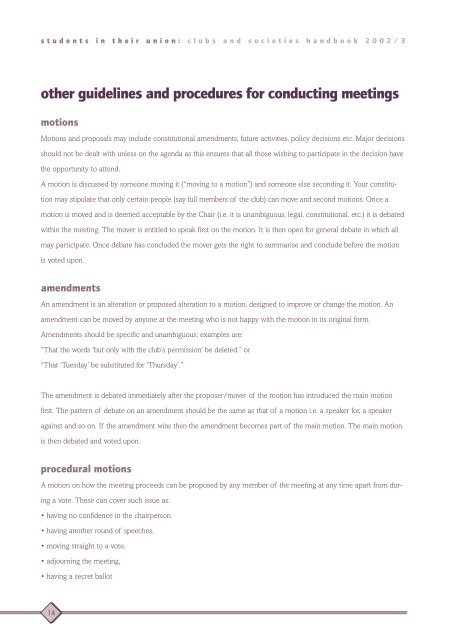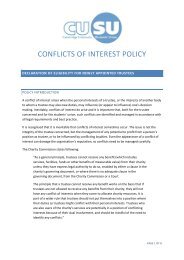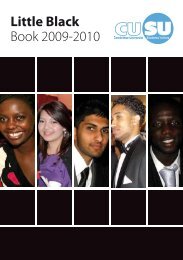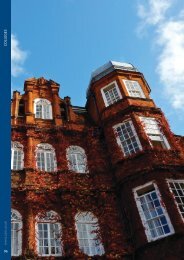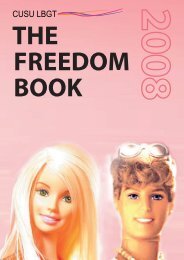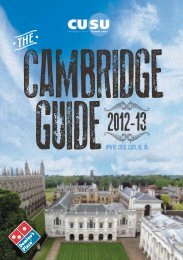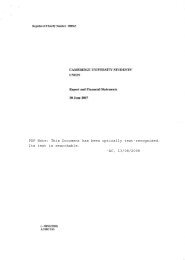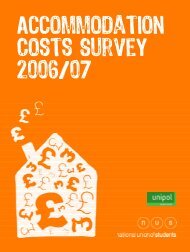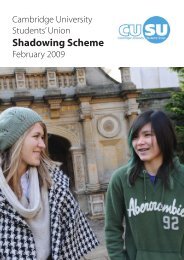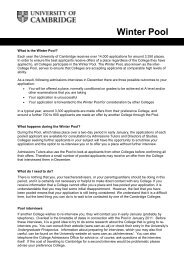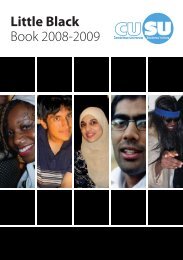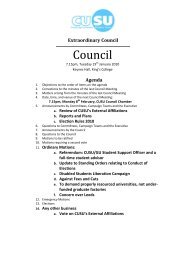Download - Cambridge University Students' Union
Download - Cambridge University Students' Union
Download - Cambridge University Students' Union
- No tags were found...
You also want an ePaper? Increase the reach of your titles
YUMPU automatically turns print PDFs into web optimized ePapers that Google loves.
students in their union: clubs and societies handbook 2002/3other guidelines and procedures for conducting meetingsmotionsMotions and proposals may include constitutional amendments, future activities, policy decisions etc. Major decisionsshould not be dealt with unless on the agenda as this ensures that all those wishing to participate in the decision havethe opportunity to attend.A motion is discussed by someone moving it (“moving to a motion”) and someone else seconding it. Your constitutionmay stipulate that only certain people (say full members of the club) can move and second motions. Once amotion is moved and is deemed acceptable by the Chair (i.e. it is unambiguous, legal, constitutional, etc.) it is debatedwithin the meeting. The mover is entitled to speak first on the motion. It is then open for general debate in which allmay participate. Once debate has concluded the mover gets the right to summarise and conclude before the motionis voted upon.amendmentsAn amendment is an alteration or proposed alteration to a motion, designed to improve or change the motion. Anamendment can be moved by anyone at the meeting who is not happy with the motion in its original form.Amendments should be specific and unambiguous; examples are:“That the words ‘but only with the club’s permission’ be deleted.” or“That ‘Tuesday’ be substituted for ‘Thursday’.”The amendment is debated immediately after the proposer/mover of the motion has introduced the main motionfirst. The pattern of debate on an amendment should be the same as that of a motion i.e. a speaker for, a speakeragainst and so on. If the amendment wins then the amendment becomes part of the main motion. The main motionis then debated and voted upon.procedural motionsA motion on how the meeting proceeds can be proposed by any member of the meeting at any time apart from duringa vote. These can cover such issue as:• having no confidence in the chairperson.• having another round of speeches,• moving straight to a vote,• adjourning the meeting,• having a secret ballot14


